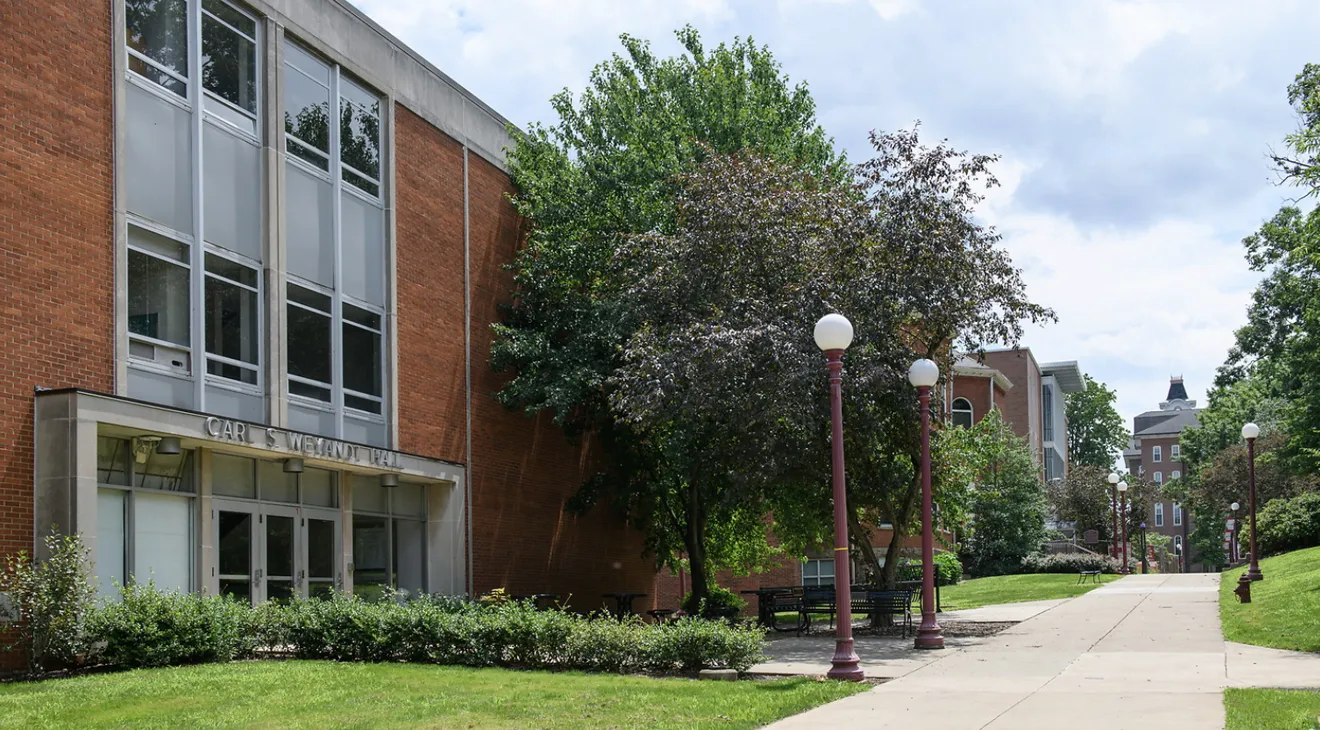Weyandt Hall—a Marvel in Its Time
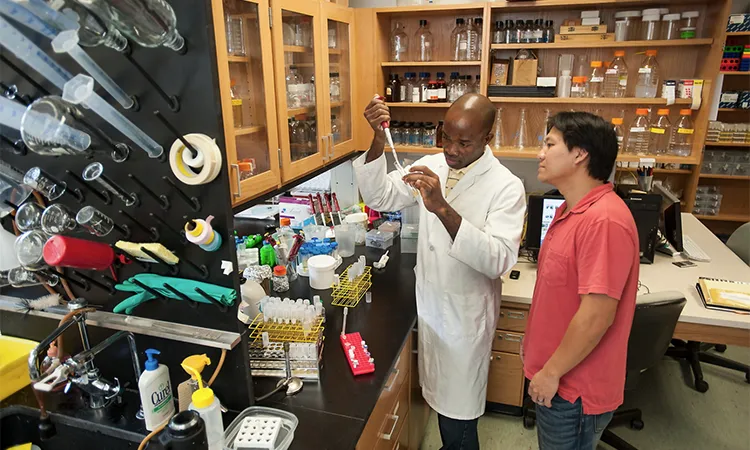

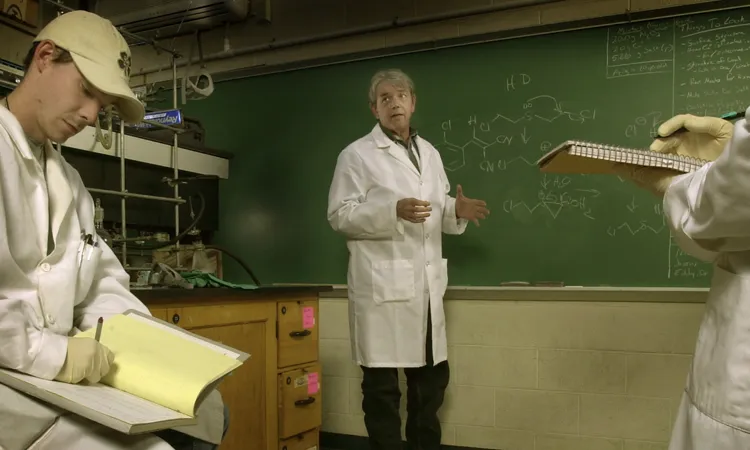
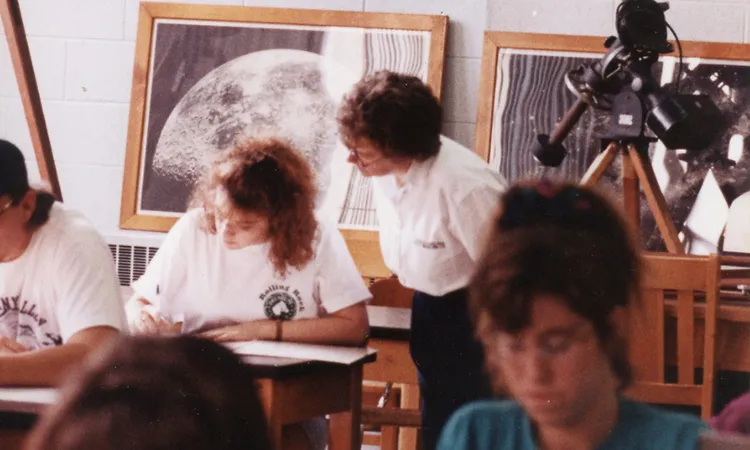

A massive, multimillion-dollar science complex is rising on the edge of the Oak Grove, a new home for those who teach and those who study biology, chemistry, physics, geology, astronomy, botany, zoology, oceanography, and more.
Kopchick Hall? Well, yes. But the paragraph above could just as easily have been written in 1966 about Weyandt Hall, a state-of-the-art facility that wowed the IUP community at its unveiling. It was the Kopchick Hall of its time.
“Weyandt Hall represents one of the most significant instructional advances in the development of the university,” IUP’s president, Willis Pratt, said back then.
Pratt presided over the building’s dedication on October 15, 1966—Homecoming weekend—only 22 months after a groundbreaking ceremony at which he turned the first spade of earth. Administrators, faculty, and students marveled at this gleaming, $3.7-million addition to the campus landscape.
“It was a bright, shining star,” said Steve Hovan, dean of the Kopchick College of Natural Sciences and Mathematics. “At that time, it was unusual for a school to put up a building solely for the purpose of all the sciences, and bringing them together.”
Before Weyandt, science students and faculty were scattered across campus. Walsh Hall was originally designed to be the science hub, but it was undersized and unable to accommodate a burgeoning university population.
“Walsh never really fulfilled its mission to be a science building,” Hovan said. “Leonard Hall still maintained biology and some of the chemistry labs. But even with all the space between what was in Leonard and what was in Walsh, it couldn’t begin to compare with Weyandt, which was just a huge building, maybe one of the biggest in what eventually became the State System. I think it would have been transformative at that time to go from very small labs and very cramped offices to having a place dedicated just for the purpose of science that had abundant space.”
Science faculty and students accustomed to bumping elbows in near-claustrophobic conditions welcomed Weyandt’s roominess.
“At that time, it was unusual for a school to put up a building solely for the purpose of all the sciences, and bringing them together.”
“Increasing the total instructional space now available on campus by as much as a full third to a half over what it had been, Weyandt Hall contains approximately 142,000 square feet and could hold as many as 2,500 students at one time in the approximately 85 classrooms and laboratories,” noted the December 1966 Alumni News Bulletin. “Included in this number are classrooms seating 150, 100 or 48 students in large lecture rooms as well as smaller conference or seminar classrooms. … Offices for approximately 50 staff members are of two types—individual faculty offices for desk work and class preparation, and research office areas for conducting faculty, graduate student and advanced graduate student research.”
The emphasis on research space was a game-changer. Faculty focus could now shift from strictly teaching to a blend of instruction and research.
“That’s what was really different about this building,” Hovan said. “Up until that point, all the space for the sciences was really for teaching the sciences. So there were teaching classrooms, or there were small lab areas that were designed for students to learn. But it was all for teaching. The new building had spaces that were specifically for faculty research. There was still a lot of teaching space, too, but for faculty to have their own research lab and to have space to conduct their research and have students become involved in that was really kind of special.”
Kopchick Hall Opening
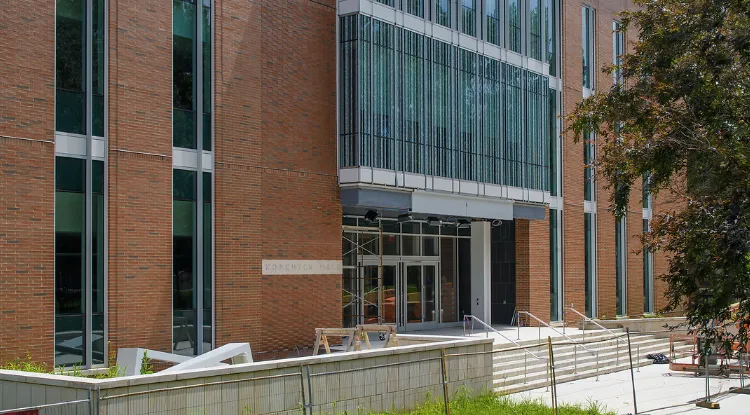
A ribbon-cutting ceremony for Kopchick Hall, home of the John J. and Char Kopchick College of Natural Sciences and Mathematics, will take place Thursday, November 2, at 4:00 p.m. Guided tours of the building will be offered that day from 2:00 to 3:30 p.m. Located between Wilson and McElhaney halls, Kopchick Hall will open to students at the start of the spring semester on January 22.
What’s more, students now had access to cutting-edge technology. The new building featured a planetarium, at the time “an unusual piece of equipment for science on most campuses,” Hovan pointed out; a weather station situated on the roof that recorded temperatures, relative humidity, atmospheric pressure, and even solar radiation; a Van de Graaff accelerator that generated artificial radioactivity; and, in the basement, one of the few seismometers located on the campus of a Pennsylvania university.
“The only other operational seismic stations [in the state] that I know of were at Penn State and Pitt,” said Fred Park, a member of the chemistry faculty when Weyandt first opened its doors. “And IUP had a dandy, because we were sitting geologically in a very nice location in terms of being able to propagate signal strength through the Earth’s crust.”
Advanced equipment of that nature bolstered IUP’s reputation as a leader in the sciences, as did a sudden surge in faculty numbers.
“At that time there was a plethora of science hiring, because we were in the moon race, among other things,” Park said. “And there was federal money coming into the operation. So when Weyandt was opened, that was just about the time IUP was able to hire more faculty in the sciences than I think it ever did—later or before that.”
Weyandt Hall was, as Hovan noted, a bright, shining star back then. Alas, the star has dimmed considerably over time. New spots invariably appear on the ceiling after rainstorms, the plumbing system occasionally backs up, and ominous cracks are visible throughout the building.
“I would like to say I’ll miss Weyandt,” said Hovan, who was a faculty member in the Geoscience Department for 26 years. “I will definitely miss what it means for the students and the faculty and the network of people I’ve gotten to know through the years. I have very fond memories of talking science with others. But I’m not going to miss the mechanical tiredness of the building. I’d be the first one to take a sledgehammer to it to bring it down.”
Fortunately, Hovan can look forward to the opening of Kopchick Hall in the spring of 2024, just as members of the science faculty looked forward to their move into Weyandt Hall in the fall of 1966.
“I can only imagine how excited they were,” Hovan said, “because it was a fairly large building. It’s still one of the biggest buildings on campus. So to have something like that 50 years ago, there had to have been an anticipation and an excitement to see it grow from the ground up. Much like we’ve been excited watching from a distance as Kopchick Hall grows from the ground up.”
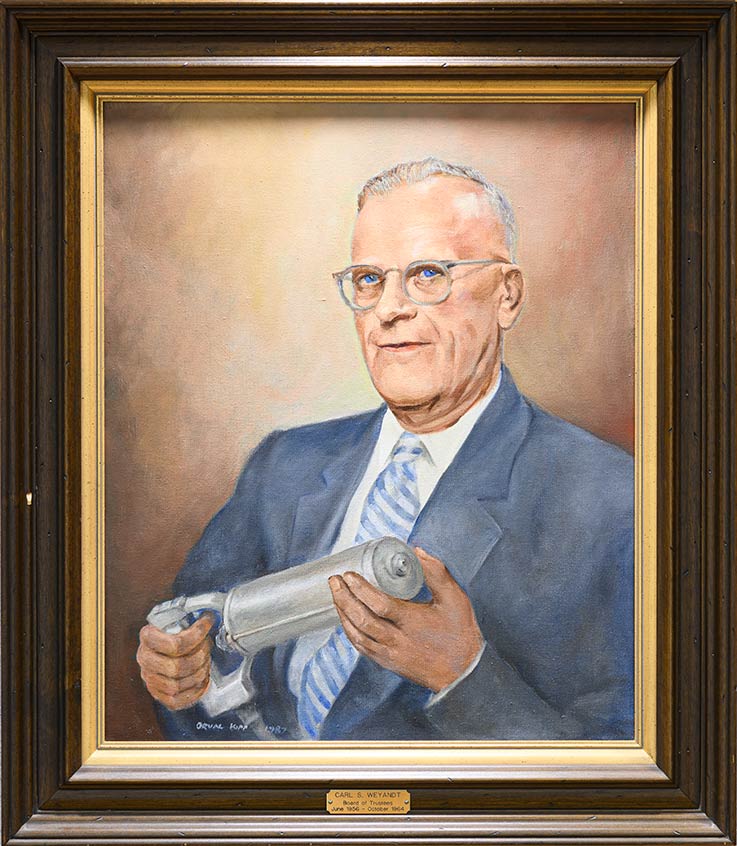
This portrait of Carl Weyandt, holding the electric hammer he developed, hangs in the dean’s conference room in Weyandt Hall. In the 1980s, Weyandt’s widow, Wanda, commissioned professor emeritus of art Orval Kipp to paint the portrait.
A Bittersweet Farewell
By Bob Fulton
John Weyandt knew this day would come. That doesn’t make it any easier for him and his family.
The building named for his late father, Carl, will soon be razed, with IUP’s science programs moving to nearby Kopchick Hall.
“I have kind of mixed feelings,” said Weyandt, who earned bachelor’s (1967) and master’s degrees (1969) in history from IUP. “Certainly we’re going to miss it. On the other hand, the people there at the university deserve an upgraded building. I’m glad IUP honored my dad, but it’s time for it to be replaced.”
Carl Weyandt—industrialist, inventor, businessman, philanthropist, civic leader—was born in Duncansville, grew up in Ellwood City, and graduated from Carnegie Tech (now Carnegie Mellon University) in 1917 with a degree in electrical engineering. Weyandt founded the Syntron Company in Pittsburgh four years later and soon after was awarded a patent for his electric hammer, which became Syntron’s signature product. Other patents related to Syntron products followed. He moved the company to Homer City in 1937 and remained its president until retiring in 1960.
Weyandt served on Indiana State Teachers College and Indiana State College’s board of trustees from 1958 until his death on October 16, 1964, and made significant contributions to what in 1965 became the university, among them annual scholarships granted students through Syntron.
“I know it was his policy at Syntron to provide scholarships for students, and that carried on for a long time,” John Weyandt said. “He came from a generation of people who felt a responsibility to the community.”
Because of his unwavering support of what became IUP after his death, the board of trustees designated the school’s new science building Carl S. Weyandt Hall. But what once was hailed as a state-of-the-art facility is now showing its age. A date with the wrecking ball looms in the not-too-distant future.
“It’s kind of a bittersweet feeling for us,” Weyandt said. “But people will remember the building. They’ll remember my dad. And that’s something that makes us feel good.”
